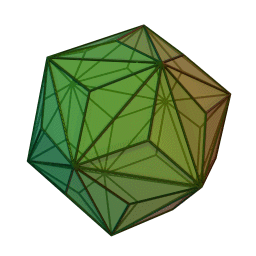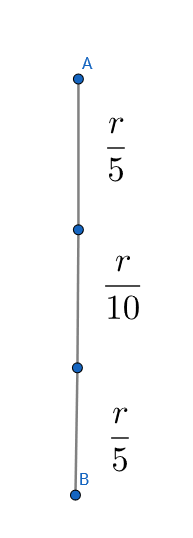Resistance through a 3D Polyhedron
Identical wires, each with resistance
, are connected so as to form the edges of the platonic solid
Triakis icosahedron
. Determine the resistance of the network between any two opposite vertices.

If your answer is then enter your answer as
You may also try these
The answer is 30.
This section requires Javascript.
You are seeing this because something didn't load right. We suggest you, (a) try
refreshing the page, (b) enabling javascript if it is disabled on your browser and,
finally, (c)
loading the
non-javascript version of this page
. We're sorry about the hassle.
Relevant wiki: Transformation of Resistances (Star to Delta and Delta to Star)
If you apply Delta-wye Transformation on every point where three lines intersect, and combining parellel lines through each edge , suprizingly you will get an icosahedron, with a resistance of r = 5 3 Ω between any two adjascent nodes.
Now observe, that by symmetry the potentials at points G , C , D , E , F are equal. So no current will flow from G C , C D , D E , E F , F G .
So we can join the points G , C , D , E , F .
Similarly, the potentials at H , I , J , K , L are equal. So no current will flow from H I , I J , J K , K L , L H . So these points can also be joined.
So the circuit simplifies to:- Now from A to B, the resistances are in series, so adding them gives
R
=
2
1
r
Now from A to B, the resistances are in series, so adding them gives
R
=
2
1
r
We know that r = 5 3 Ω .
So putting this we get R = 1 0 3 Ω . So the answer is 3 0